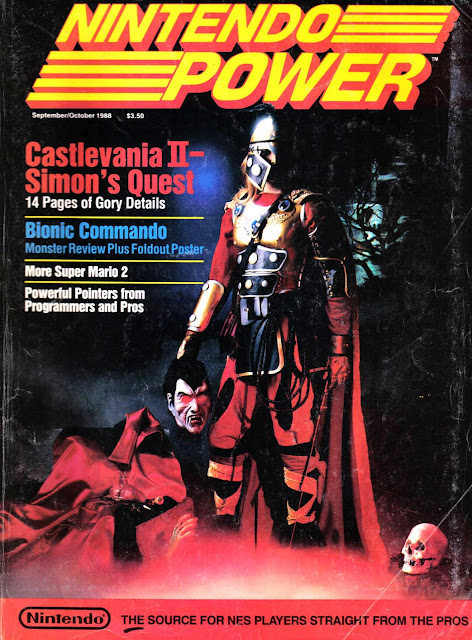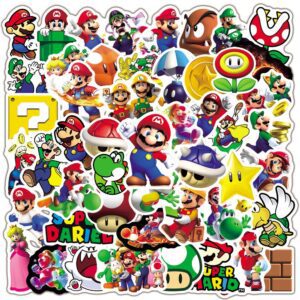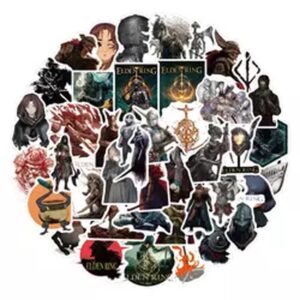This week in video game history – one of the all-time most famous RPG’s arrives for PlayStation in the US, one of the longest running simulation series begins, a cursed Simon Belmont returns and the world is introduced to a pair of world warriors . . .

Celebrating the 20th Anniversary of its release in the United States this week is arguably one of the most well-known role-playing video games – Final Fantasy VII.
Taking the series from its usual high fantasy settings, Final Fantasy VII begins in the fictional city of Midgar. A dystopia where high technology and an evil mega corporation reigns. The story begins when a team of eco-warriors arrives at the city train station aiming to take down the Mako Reactors belonging to the Shinra Electric Power Company, the mega corporation that is literally sucking the life out of the planet and turning it into an energy source. For this assault, this band of eco-warriors (known as AVALANCHE) has a new recruit, a mercenary and former soldier named Cloud Strife.
The first reactor is successfully bombed by AVALANCHE but the second assault goes awry and Cloud is separated from his cohorts. This development then kicks off his adventure as the game’s main protagonist and in doing so revealing his past and uncovering plans of a famous soldier thought to be deceased that are more threatening to earth than Shinra.


Series creator Hironobu Sakaguchi
Almost immediately after the completion of Final Fantasy VI, initial concepts and ideas for its follow-up began. This was in 1994, a time when the next generation of home games consoles are well into their development. The PlayStation would launch in Japan late in the same year and just around the corner was the Nintendo 64 launching a little over a year and a half after. Just like its predecessor, Final Fantasy VII was slated for a launch on Nintendo’s successful Super NES system. About this time, the development team had fashioned a working prototype of a 2D Final Fantasy VII. Development of FFVII would then be suspended, as producer and series creator Hironobu Sakaguchi, director Yoshinori Kitase and their team would lend a hand to complete work on an equally legendary RPG – Chrono Trigger.


It would be in 1995 when the FFVII development team would reconvene. The next generation is well underway and so it was then decided to take the Final Fantasy series into new and potentially risky visual territory – 3D. Squaresoft, who already had a well-established relationship with Nintendo, initially planned for the N64 as the games platform. The increasing costs of cartridge based media meant plans were changed to make Final Fantasy VII a 3D epic for the N64’s then planned disk-based add-on, the 64DD. Sega’s Saturn and Windows PC were also considered.
A tech demo for the N64 was created but eventually, development would be scrapped when it was realised during early testing that the N64 version of FFVII suffered a low-frame rate. The combined technical and cost issues meant the N64 was simply not a viable platform. It was later estimated that Final Fantasy VII would take up around 30 64DD disks or 12 Nintendo 64 cartridges.
Deciding that the CD-ROM format was by the far the most suitable, development was then moved to Sony’s PlayStation. This move soured the relationship between Nintendo and Squaresoft, especially when Square, impressed by the CD-ROM format, revealed plans to move all future projects to Sony’s new platform.


This week in 1992, one of the most famous and popular football management simulations series began, starting with Championship Manager.
In the 1990’s, British Football was on the rise. It was when Football was broadcast on Satellite TV that televised games, highlights and news became as typical of British TV as any daytime soap opera. The English Football League was on the cusp of morphing into the explosive Premier League and fresh off of the exposure of the recent world cup Italia 90. The 1990 World Cup depicted the exciting progress of the English National football team which helped legitimise the game as a family spectator sport.
In the previous decade, Football was far less glamorous, apart from drab and occasional live coverage, a lot of standout exposure of the sport involved not much more than news coverage of tragic Stadium disasters and riotous hooliganism.
Going back to the 90’s and to a farm in Shropshire, England. In their bedroom, two brothers, schoolboys Paul and Oliver Collyer began a computer project. Having been disappointed by what was on offer at the time, the Collyer brothers began to plan and develop their own football management simulation game. They created European Champions, it featured all 4 divisions of the English Football League with a complete roster of made up players.
With their completed project, the brothers approached around 20 prospective publishers with no luck. Eventually, the game would be accepted by London-based company Domark, who after suggesting changing the game’s title to Championship Manager, launched the game for the Commodore Amiga and Atari ST home computers. It would become the best selling home computer game of its era yet despite this Championship Manager is regarded as only a moderate success.


It was after September 1995, that the series would go meteoric with the launch of Championship Manager 2. CM2 took the series to a new level adding real life licensed player names, more statistical detail, and an expanded database.
After Championship Manager Season 03/04, the development team split with their current publisher Eidos but were unable to retain the Championship Manager name. So the team created a spiritual successor and the name that the series now goes by – Football Manager. They may not have kept the name, but the CM team managed to keep the game’s code and it’s all important database.
Championship Manager and Football Manager combined to be one of the most successful and longest running sports game franchises of all time, which is still going strong. Its community is getting bigger and technology improves. For some, Football Manager would become an addiction, a relationship, career and even life disrupting obsession. It’s a game of pure escapism, with some CM players even going as far as to add to the overall experience by playing actual recordings of a bustling, lively, crowd-filled stadium in their rooms and crazier yet, for a big cup final game, donning an expensive and nicely pressed suit. For some, it’s a way of life, and with the advent of mobile and handheld versions of the game, players can organize their managerial duties around their busy lives. Football Manager has become not just a hugely popular game amongst football fans but an integral part of football culture.
In order to obtain maximum realism and to portray players and teams as accurately as possible, the team behind Football Manager has a colossal network of 52 head researchers in countries and regions all over the world and over 1,000 individual researchers. These “Scouts” are all genuine football fans and literally watch football and footballers full-time. In the UK, researchers began scouting much lower ranked teams in the lowest of leagues, such as the Football Conference. This has since expanded to low ranking teams all over the globe like the Italian Serie C2 and the Spanish Segunda Division B leagues. This alone strengthens the idea that Football Manager is part of the sport and FM players are part of what makes the game. This huge crowdsourcing effort helped make the Football Manager database of over 400,000 players and staff the largest and most detailed football database in the world.
Football Manager’s impressive database has been recognized as a legitimate source for the scouting of actual players. In fact, in 2008, English football team Everton FC signed a deal with FM’s developers, Sports Interactive, giving them full access to the games database to research opposition and to scout players.
Did you know that many FM players, because of the strength of their virtual football management resume, have applied for actual football management roles? In 2006, John Boileau applied for the role of manager at English football club Middlesbrough following the announcement of the departure of their current manager. His wish to do so had been one of the many desires he penned on a bucket list he hoped to complete before turning 30. He also had an impressive digital resume detailing having played many seasons and achieved much success and accolades in Football Manager. Amazingly he got a response, albeit a humorous one from the team’s Chairman Steve Gibson, which said “You were, of course, the outstanding candidate but we decided against your appointment. Quite frankly we were of the opinion your tenure with us would have been short-lived, as your undoubted talent would result in one of the big European Clubs seeking your services.”


Another example involved a 12-year-old boy who applied for a managerial role at English club Wolverhampton Wanderers. Sadly, he too was rejected despite stating his skills playing Football Manager and that his mum would be more than happy to wash the team kits. Given the respect that FM has acquired it does seem possible that one day, one FM player will at least be invited to interview.
Spanning 25 years, the CM/FM series has seen many technological improvements in gaming and so the game has changed along with it. The series has gone from text based gameplay to dots representing players in a live and active real time football match. Then from a 3D match to now, where matches involve detailed 22 motion captured players, making this piece of pure escapism even more immersive than ever.
The next game in the series – Football Manager 2018 – is scheduled for release in November 2017…


On August 28th, 1987, Simon Belmont returns in sequel Castlevania II: Simon’s Quest, released for Famicom Disk System in Japan. While the first entry of the Castlevania series would be a standard stage hopping platformer, Castlevania II: Simon’s Quest expanded the game to incorporate elements of RPG gameplay and open world exploration, much like Metroid. Castlevania II is actually the 3rd game in the series, the second game Vampire Killer for the MSX2 was only released in Europe and Japan and would introduce nonlinear gameplay to the series.
The game takes place once again in Transylvania, directly following the events of the first game. After defeating Dracula, Simon Belmont finds himself possessed by a curse. The only way in which the curse can be removed is to find five parts of Dracula’s body, and destroy them. However, Dracula’s body bits have been mysteriously scattered throughout Transylvania.
Castlevania II is a blend of action platformer and role playing mechanics. Simon can talk to non-playable characters to gain valuable information, he can visit shops to stock up on supplies and weapons, explore at will, upgrade weapons, rest and collect quest items.


Expanding further on the original Castlevania formula, Castlevania II’s environment involves a lot more varied indoor and outdoor areas such as mansions which function as dungeons and towns where Simon can purchase items from shops, rest and speak to the townsfolk.
Simon’s Quest introduced an experience system to the Castlevania series. It was also the first game to feature a Day and Night cycle. The day/night cycle also had a unique function when it came to enemies. When night fell, enemies would become stronger, they would inflict more damage while being able to absorb more too. These tougher enemies would also drop more hearts contributing more to Simon’s experience points. At night, NPC’s would also disappear, well it is bed time is it not? NPC’s can’t go standing in the same spot for the length of the game or wander randomly forever now can they?
Castlevania II also features three endings, what ending a player achieved was dependant on how quick the game was finished.
For their second issue, Nintendo Power Magazine created a controversial cover publicising the long-awaited sequel to Castlevania. The cover depicted a model dressed as a heavily armoured Simon Belmont holding Dracula’s severed head. Many outraged parents complained about the macabre cover, claiming it’s violent gruesomeness gave their children nightmares.




On August 30th, 1987, the Street Fighter series made its debut in Japanese arcades and is the first fighting game from Japanese developer – Capcom. Street Fighter is a significant part of fighting game history, it popularised and introduced the concept of what is now an integral part of the fighting game genre – the “Special Move”.
Here, Ryu has his signature special moves, such as Psycho Fire otherwise known as Hadouken (Surge Fist), the Dragon Punch or Shoryuken (Rising Dragon Fist) and his Hurricane Kick or Tatsumaki Senpu Kyaku (Tornado Whirlwind Kick). These moves, as they often will be, are not explicitly provided to the player encouraging practice and adding discovery to the gameplay.
There were two versions of the machine, one with the standard 6-button setup and another with 2 large rubber pads, these pads were pressure sensitive, how hard a player struck them dictated how quick and strong Ryu’s attacks were. One year and likely many broken fingers later the game lept to home computers such as Commodore 64, ZX Spectrum, Amstrad CPC, DOS, Amiga and Atari ST and to home console such as the TurboGrafx-16 in Japan and North America, where it was known as Fighting Street.
For many, their personal history with Street Fighter began when Street Fighter II hit the Super NES and Sega Mega Drive/Genesis. SF2’s predecessor would likely be overlooked by almost all gamers, and so many may be surprised when they discover that Street Fighter had no Chun-Li, no Guile or Dhalsim, in fact, it only offered 2 playable fighters to choose from – Ryu and Ken, the series has since grown and has featured a roster of over 70 different characters.
Ken would only be playable in a two-player fight. This two player battle has a unique purpose, it would decide which of the two fighters would continue the game. The victor would earn the right to fight the rest of the game’s combatants continuing in 1-player mode.
There is yet another familiar face here, the “Emperor of Muay Thai” himself, Sagat. Sagat functions as the game’s final battle. There is a boxer called Mike, who is very much a precursor to Balrog but is regarded as a different character.
There are 10 opponents in Street Fighter, which reappear in later entries in the series, such as: Adon, a Muay Thai warrior and former pupil of Sagat’s (TIGER!!), Birdie, a 70’s punk from the UK and Eagle, a stick fighting bodyguard from England (both Eagle and Birdie are named for golf terms). Then there is Joe, an American underground kickboxing champ, and Gen, an elderly professional killer who has developed his own dangerous fighting style.


All these fighters and others come from all over the globe to challenge in what is the first World Warrior tournament. The competition was started by Sagat, who (not being content with his greatest Muay Thai fighter ever title) started the tournament to prove he was the greatest fighter in the world.












